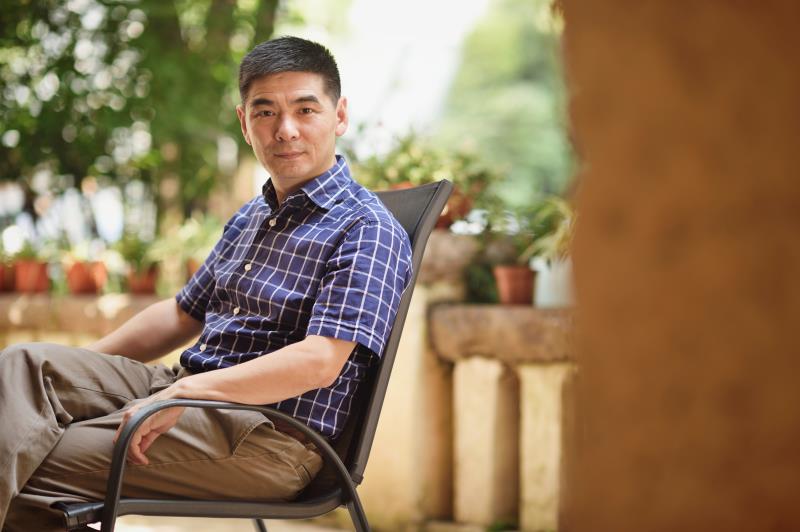
张巍,博士,上海音乐学院作曲系教授,作曲技术理论方向博士生导师。现任上海音乐学院研究生部主任、全国艺术专业学位研究生教育指导委员会委员、中国音乐分析学会秘书长、国务院音乐与舞蹈学科评议组秘书、上海市音乐与舞蹈学科评议组成员、上海音协理事。曾作为访问学者、访问教授先后访问了美国、德国、英国与澳大利亚的多所大学。出版学术著作三部并在国内核心期刊中发表学术论文三十余篇,其中主要的学术著作有《音乐节奏结构的形态与功能——节奏结构动力若干问题的研究》等。
Dr. Zhang Wei is the professor of composition faculty in Shanghai Conservatory of Music and the doctoral supervisor in music theory. He now is serving as the dean of Graduate School of Shanghai Conservatory of Music. Moreover, he has quite many titles like the member of National Education Committee for Graduate Students of Art, secretary-general of China Academy of Music Analysis, secretary of Review Panel of Subjects of Music and Dance under the State Department, member of Shanghai’s Review Panel of Subjects of Music and Dance, and member of Shanghai Music Association. He left his footprints in universities of America, United Kingdom, Germany and Australia as a visiting scholar. He has more than 30 academic papers published in China’s core periodicals. He also published 3 academic books including Study on the form and function of music rhythm structure—the matter of Rhythm Structure Dynamism.
二十世纪音乐节奏研究的若干问题
Research on Rhythm in 20th Century’s Music
内容提要:
节奏问题的研究始终是音乐理论研究中的一个重要方面。虽然对于节奏的研究始终与音乐的时间问题密切有关,但是,在不同的历史阶段,对于节奏理论与实践的研究也呈现出不同的特征。
早期的节奏研究显然是格律化的,与语言的格律呈现了直接的关系;进入共同写作时期,节奏虽然于音乐形成的作用更加复杂和重要,但节奏的研究显然是为了指认音高(调性、和声等)要素的价值和意义;而到了二十世纪之后,一方面早期节奏实践的经验得到了更加普遍的运用,另一方面,节奏也呈现出了更为显性的作用与特征——其繁复的形态充分体现了其作为重要的音乐独立要素的价值。也正是因为二十世纪以来音乐节奏的这样一些特征,如何开展理论的研究也成为一个问题。
作为解决这个问题的一种努力,我的发言内容将会涉及到这样几个方面:第一,传统节奏研究的主要问题与困境。将涉及到的主要问题有“节奏结构”与“节拍结构”的二元关系以及节奏的重音等问题;第二,二十世纪音乐节奏的风格化的分类。则会涉及到不同类别的节奏写作风格,其中会从形态方面来说明对于节奏分类的依据;第三,二十世纪音乐中一些音乐节奏新的生成方式及其价值和意义。这个部分将从更加广义的方面来观察新的节奏的生成背景及其在宏观与微观方面所体现出的结构价值。
Abstract:
Rhythm is an important subject of theoretic studies on music. The research on rhythm is closely with the musical time, but also it varies from one period in history to another.
Early studies were distinctively focused on and directly linked to metrical patterns of language. Even though rhythm has played a role more significant and intricate in the birth of music since the “common practice”, the rhythm was studied to identify the value and significance of the pitch (tonality and harmony).
However, changes happened from the 20th century. On one hand, results of early rhythm practice achieved a wider application. On the other hand, the rhythm shows a more dominant role and characteristics, it revealed its own value as an important music element through the intricate form. These features of after- 20th century music rhythm raise the question: how to conduct theoretic studies on music rhythm?
As an effort to answer the question, my presentation will cover the following aspects. Firstly, I will mention the major problems and difficulties confronting conventional studies like those concerning the relationship of “rhythm structure “and “meter structure” and the stress of rhythm. My second topic is the stylized classification of the rhythm in 20th century music. I will touch upon the composition styles of different rhythm and criteria on which the classification is based. The Third would be new ways of rhythm creation in 20th century music and their significance. I will refer to the background in which those new ways took shape and its valuable role in macro and micro dimensions.



